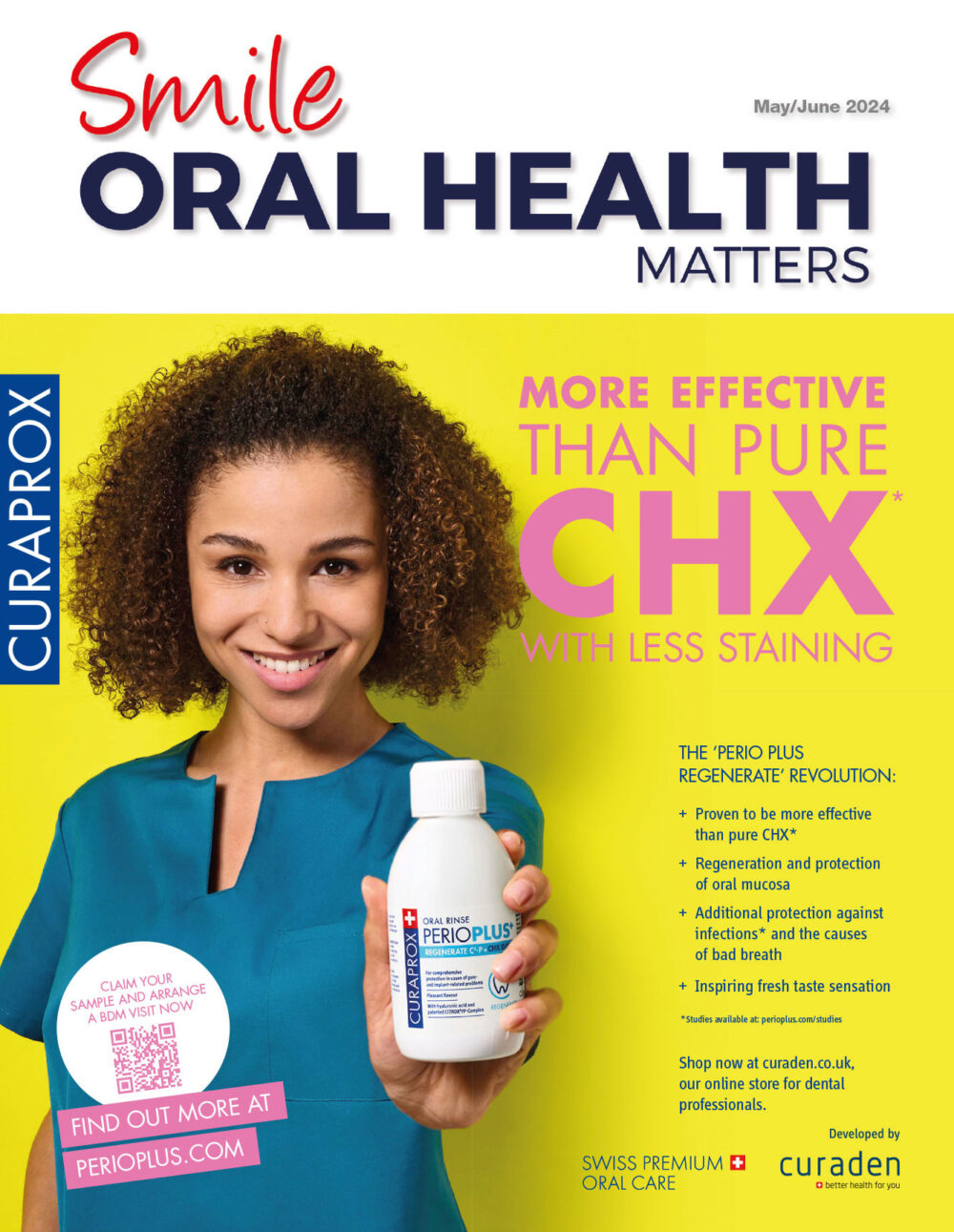Dr Selvaraj Balaji presents an implant case that required both soft and hard tissue augmentation with dental implant placement to restore a missing UL2.
A female patient in her 60s presented missing a lateral left incisor that she wanted to replace. She visited the practice shortly after the Covid pandemic, during which she had developed an infection and the UL2 had been extracted.
A full medical history was taken, showing the patient to be generally fit and well. A CT scan revealed buccal bone loss around the UL2 site and where a large cyst had been removed there was a major bony defect. There was also a soft tissue defect around the site of the UL2. The patient’s periodontal health was fair and a crown was identified on the UR1.
Treatment planning
The patient was presented with all appropriate treatment options, including no treatment, a removeable denture, a bridge and an implant-retained crown. She was hesitant to proceed with a removable denture due to her preference for a fixed solution. A bridge would also have required the removal of the UR1 crown, with the associated increased costs, which she was keen to avoid as well. An implant, therefore, was the most suitable treatment for this patient. At this point, it needed to be decided whether bone augmentation and delayed implant placement would be most appropriate, or if simultaneous grafting and implant placement could be performed.
A CBCT scan provided greater visualisation of the bony defect, demonstrating adequate bone for primary implant stability. Consequently, simultaneous bone augmentation – using a combination of autogenous bone and xenograft material – was indicated alongside implant placement to treat the bony defect and increase the hard and soft tissue volume for optimal results. There was also a need for soft tissue augmentation in order to increase the gingival volume to ensure good healing and a highly aesthetic outcome. A connective tissue graft was selected for this case, using autogenous soft tissue from a connective tissue graft (CTG) harvested from the patient’s palate.
Treatment was planned to determine the most suitable implant position, angle and depth, with consideration for the restorative space created. Harvesting sites were also identified and communicated to the patient. All aspects of the procedures involved were discussed with the patient in detail, exploring the benefits, limitations and risks. Once all the patient’s questions were answered and she was comfortable with treatment, she provided informed consent to proceed.
Surgical appointment

The UL2 area was numbed using LA and a full thickness flap was raised to reveal the buccal bony defect. Autogenous bone was harvested from the left external oblique using a safe scraper. The UL2 bony defect cavity was then filled with a mixture of the autogenous bone and a xenograft material. What I refer to as a ‘layering technique’ was used to achieve this, which is designed to ensure the autogenous bone graft attaches around 360º of the implant for osteointegration to provide maximum strength and stability.
An Astra Tech EV 3.6mm diameter implant was placed to the pre-determined position, angle and depth. Sufficient primary stability was achieved from the interdental bone and at the apex of the implant. Bone augmentation was completed as planned, adding a mixture of autogenous bone and xenograft around the implant, which was then secured using a native collagen membrane with master pins.
During the same appointment, connective tissue was harvested from the palate. This was placed over the implant site to increase the soft tissue thickness post-surgery. The flap was then closed tension-free with 6.0 monofilament, resorbable glycogen sutures.
A temporary restoration was placed out of occlusion. The patient was given all the standard post-operative oral hygiene instructions and advised to avoid chewing on the implant site for a few days.
Review and restoration

The patient returned to the practice one week later for the initial surgical review. She reported only very minor discomfort – as would be expected – which was managed with over-the-counter painkillers. A radiograph was taken to confirm the implant position and the beginning of the osseointegration process. Three months post-surgery, the implant was exposed and a temporary restoration fitted. Approximately 6 months after this, the patient confirmed she was happy with the aesthetics and function of the temporary restoration, and the final restoration was fitted.
Upon a review of the patient five years after the treatment was completed, the implant remained fully integrated, bone levels were stable and the soft tissue was thick, pink and healthy.
Discussion
Both the patient and clinician were pleased with the outcome delivered in this situation. The case clearly demonstrates what can be achieved even when a significant bony defect is detected. For the treating clinician, it is crucial to have the skills and the confidence to provide effective soft tissue management when approaching similar clinical scenarios, including everything from tension-free flap closure to the harvesting of a connective tissue graft for enhanced soft tissue aesthetics and healing. The flap design and soft tissue manipulation techniques must be incorporated into the treatment plan so both the practitioner and patient know exactly what to expect during and after surgery.
Dr Balaji provides industry-leading training courses on both hard and soft tissue management around dental implants with the ASHA Club.
For more information about how you could elevate your skills with the support of experts, please visit www.ashaclub.co.uk or call 07974 304269
Author: Dr Selvaraj Balaji. BDS, MFDS RCPS(Gla), MFD SRCS(Ed), LDS RCS(Eng)
Since he obtained the BDS Degree, Dr Balaji has worked in Maxillo-facial units in the UK for several years and gained substantial experience in surgical dentistry. He is the principal dentist of The Gallery Dental Group which is made up of Meadow Walk Dental Practice and The Gallery Dental & Implant Centre. Dr Balaji is also the founder of the Academy of Soft and Hard Tissue Augmentation (ASHA) and runs courses, lectures and study clubs in the UK and around Europe for aspiring implantologists.












